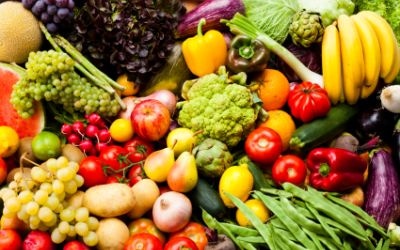Strategy document describes FDA's integration of new import oversight tools with existing tools for comprehensive approach to imported food safety.

The U.S. Food & Drug Administration released its “Strategy for the Safety of Imported Food,” which outlines the agency’s comprehensive approach to helping ensure the safety of food imported into the U.S.
The U.S. imports about 15% of its overall food supply from more than 200 countries or territories, with 13.8 million food shipments in 2018. In 2019, about 14-15 million shipments of imported food are expected to enter the U.S. Other countries supply approximately 55% of fresh fruit, 32% of vegetables and 94% of seafood consumed in this country.
While the U.S. food supply is among the safest in the world and significant food safety advances are being made, a preventable level of foodborne illness continues to occur – arising from both domestically produced and imported food. For imported food, the volume and variety of imports and the complexity of global supply chains make food safety a challenging issue to address, FDA said.
Further complicating the issue, some exporting countries may have food safety systems that differ from U.S. standards and have differing levels of regulatory capacity. Fortunately, FDA has been provided with a range of tools and authorities to address the situation both domestically and in the foreign arena.
The strategy document released describes how FDA is integrating new import oversight tools with existing tools to help ensure that imported food is safe for consumers in the U.S.
In 2011, Congress passed FDA's Food Safety Modernization Act (FSMA), shifting the focus of federal regulators from responding to contamination to preventing it. Over the last several years, the agency has developed prevention-based standards applicable to foreign and domestic food growers, manufacturers, processors, packers and holders.
For example, the preventive control rules for human and animal food production require manufacturers, processors, packers and holders of foods to broadly institute current good manufacturing practices and, as appropriate, to apply preventive controls, including supply chain controls, as appropriate. The produce safety rule, which emerged from FSMA, requires foreign and domestic growers to implement minimum standards for the safe growing, harvesting, packing and holding of produce.
In addition to establishing new food safety standards, FSMA has granted FDA new and supplementary oversight and enforcement authorities to ensure that industry is meeting these standards.
The strategy is guided by four goals:
Food offered for import meets U.S. food safety requirements.
FDA border surveillance prevents entry of unsafe foods.
There is rapid and effective response to unsafe imported food.
The food import program is effective and efficient.
To ensure the safety of the significant volume of food offered for import into the U.S., FDA will pursue objectives related to verification, enhanced compliance and increased data and information sharing on all imports. The plan is to optimize the use of foreign inspections, ensure importer use of foreign suppliers through effective implementation of the Foreign Supplier Verification Program final rule as well as leverage the oversight efforts of regulatory counterparts with strong food safety systems.
FDA’s surveillance effort at more than 300 active U.S. ports of entry -- all points where shipments enter the U.S. -- remains an essential element of its strategy to ensure the safety of imported food. Generally, FDA’s surveillance tools are screening, examination, sampling and testing. The agency will maximize public health assurance by incorporating new sources of information into the import screening and entry review processes. FDA said it plans to continue to enhance and redefine its import screening and entry review processes.
FDA also plans to maximize the effectiveness of its response to an event involving an imported food. FDA’s Coordinated Outbreak Response & Evaluation network analyzes internal and external information to identify human foodborne illness and injury trends and evaluates potential and emerging clusters of illnesses and injuries.
About the Author(s)
You May Also Like




.png?width=300&auto=webp&quality=80&disable=upscale)
